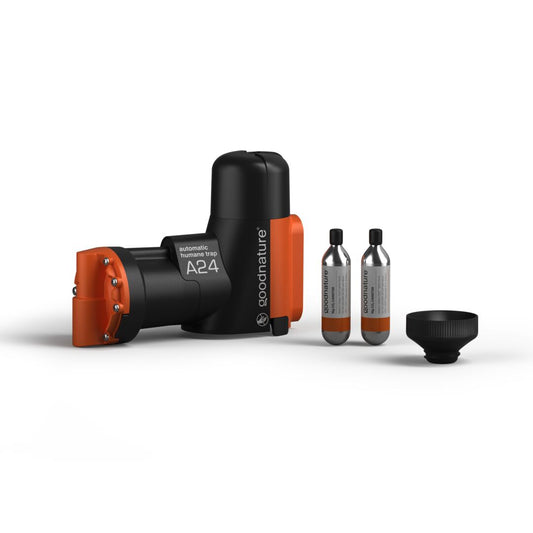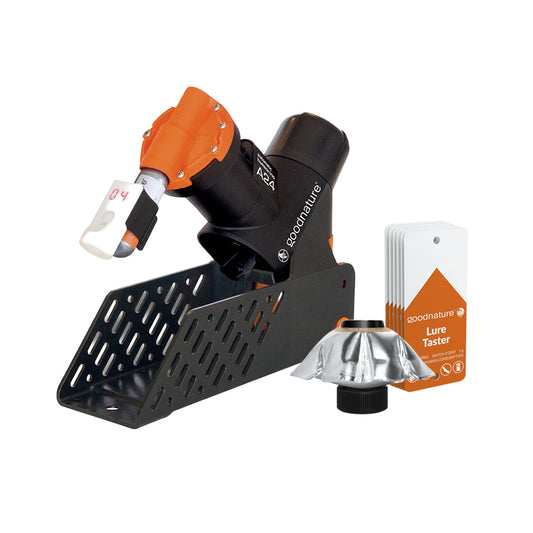For some, the notion of labeling certain animals as pests can be contradictory with their morals. It can be extremely challenging for animal lovers to even entertain exterminating any animal. Unfortunately, sometimes there is no other option. Though it can seem to inhumane to animals like mice, rats, and raccoons — can create a variety of issues such as extensive property damage and a serious threat of diseases like the deadly hantavirus.
While no one enjoys it, exterminating pests is often necessary and can be done in a very conscientious and respectful way. The idea is to relieve “mutual misery.” This means preventing degrees of suffering during the process, as well as, minimizing health and physical dangers to humans.
Why are Certain Traps Viewed as Inhumane?
Many common rat traps are designed to end the life cycles of the animals they kill by any possible means. This can involve destroying parts of the rat’s body, or stopping it from moving. Snap and glue traps tend to have features that do not always work efficiently and quickly. They can create undue suffering, or result in the complete failure to kill. In short, traditional snap and glue traps are only successful at exterminating a small percentage of the pests that they target.
Glue Traps Can Be Cruel
The concept of a glue trap is simple. Provide an enticing and attractive area that a pest will want to explore — once the pest touches the surface, an extremely powerful sticky substance holds them in place. Because the trapped animal has will most often try to flee in panic due to instinct, this can be incredibly cruel. This only makes more areas of the pest’s body immobile as it struggles.
Additionally, the glues used in these traps are usually caustic. It will slowly and painfully burn the pest’s skin, eyes, and mucous membranes. Worse is the danger of suffocation and starvation. To add to this, many people who set traps do not always monitor them regularly. They might leave the traps unchecked for many days or even weeks. During this time, the pest slowly succumbs to starvation, loss of motor control, harsh air conditions, or torture by scavengers. It is also common that the people who set glue traps will end up having to kill the pests themselves. Unfortunately, some of those people are not adept at finishing the task.
Are Snap Traps Humane?
These traps utilize a heavily loaded spring attached to a thin crossbar. A trigger is loaded with bait. When a pest finds the bait and takes a bite, the bar suddenly snaps toward the body. The hope is that this trap will find the right spot on the body to produce death.
It seems that the manufacturers of traditional snap traps, sometimes forget how fast and limber rodents can be. When a rodent senses danger, it will bolt with incredible speed. This speed can be as fast as the action of the trap. The “snapper” often connects with a part of the pest’s body that is not completely vital. Sometimes, it only crushes the nose, a leg, or the soft underbelly. If a snap trap connects with a part of the pest’s body, death will eventually follow. The dying process could take a very long time, and the animal will be in extreme pain throughout the ordeal. There is only a thin chance that a snap trap will precisely connect with a pest’s skull or spine. So, are snap traps quick kill? Not very often.
If a pest happens to get away from a snap trap, it will probably do so with a life-threatening injury. Being maimed almost always means an agonizing and slow death in the wild. There is a huge difference between systematically killing pests in an efficient manner, and killing using any means possible. The difference is the degree of cruelty involved in the process. It does not matter how bad a person wants to get rid of pests. It should be done with accuracy, speed, and the avoidance of inhumane actions.
Other Reasons To Use a Humane Rat Trap
Minimizing suffering is the best way to exterminate a pest. Quick-kill traps are very useful for people who want to approach rodent control in a responsible manner. They make the job less visibly and viscerally traumatic and can be especially useful when educating children about dealing with pest management in an ethical and pragmatic way.
Many households are home to other animals such as pets or even livestock at farms. Curious cats, dogs, horses, and birds can develop an interest in rodent carcasses. If the carcass is caught in a snap trap, pets can be exposed to soiled and sharp surfaces. If it is caught in a glue trap, pets run the risk of ingesting poisonous substances. This is another reason to try and avoid traps of this nature.
Making The Right Decision
Investing in traps that use no toxins, are automatic, and ensure an instant death — are paramount pillars to ensuring you are practicing responsible pest management. Additionally, using a trap like the Goodnature A24 is guaranteed to be safe around children and pets. The most quick-kill rat trap is one that gets the job done quickly, doesn’t cause a mess, and most importantly diminishes suffering inflicted on these complex creatures. Completely quick-kill traps are available to buy, and they make the job of extermination simple, safe, and very quick.






